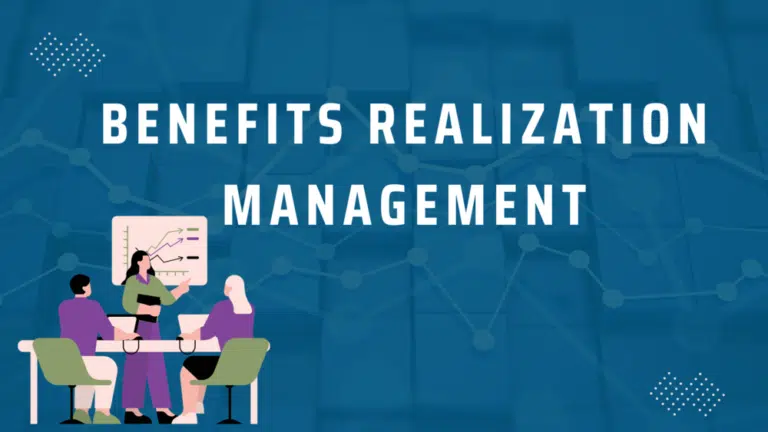Project baselines are key project management documents that measure the project’s performance. Stakeholders can use them to compare current progress with planned progress.
Project management baselines help you monitor and control project progress and take necessary action when the project deviates or performs below expectations.
In this article, I will explain project baselines, their components, and their importance in project management.
Table of Contents
What is a Baseline in Project Management?
A baseline in project management is a reference point for measuring the desired parameter, such as schedule, cost, or scope. This reference point helps you compare your project’s performance over time.
Based on this review, you can take necessary actions if required. For example, if the schedule baseline says you should have completed 50% in six months but only 40%, you must take the necessary measures to achieve the desired progress and bring the project on track.
For any project, you monitor these three baselines: “schedule baseline,” “cost baseline,” and “scope baseline,” and report to stakeholders separately in the performance reports.
These baselines, collectively known as performance measurement baselines (PMB), are interconnected, and changes in one affect the others. For example, schedule delays will affect the cost baseline, and any change in project scope will affect the schedule and cost baseline.
You can assess these PMBs individually and then control and monitor them to ensure the project does not deviate from its planned progress.

A schedule baseline concerns the project duration and the activity start-and-end dates. If the project manager develops a schedule based on a critical path, they must control the total and free-float activities and other network paths. If the schedule is developed based on milestones (i.e., a milestone schedule), they must monitor the milestone dates on the timeline.
The project scope determines how the project manager will finish the work. The scope baseline addresses the “what” question. It establishes the project’s goal and directs how the project manager will accomplish it. The scope baseline comprises the project scope statement, work breakdown structure, and WBS Dictionary.
A cost baseline is a project’s cost estimate. It includes the cost of all project tasks and the contingency reserve. This project management baseline lays out all the resources a project will need, including manpower, direct and indirect costs, and so on.
Example of Project Baselines
Assume you are managing an awareness campaign for your local hospital. The campaign aims to raise health awareness and convince senior citizens to get regular checkups. This would help prevent many illnesses from getting worse, enhance community health, and increase hospital income.
You can develop the project baselines as follows:
- Scope: Approach 200 new paid patients
- Schedule: Two months
- Cost: 1,500 USD
The process to develop baselines is as follows:
- Outline tasks to reach out to the audience and make them aware of their health risks and the importance of medical checkups. Do this for up to 200 new clients. Plan outreach methods (e.g., door-to-door outreach, road walks, community events, etc.).
- Develop the campaign timeline.
- Create the schedule baseline and budget.
How to Define the Project Baseline
You can define the project baseline in a sequence.
First, you will define the scope baseline. To do this, you will collect the scope of work and break it down into work packages and activity levels using a work breakdown structure.
Afterward, you will develop the schedule baseline line. You will find the sequence of activities, apply project management dependencies and duration, enter start and end dates for each activity, apply resources, and then develop the network diagram, Gantt chart, etc. Now, the schedule baseline is ready.
Once the schedule baseline is ready, developing the cost baseline is easy. You will enter the rate of resources and cost of material, add other indirect costs, and your project cost is ready. Once you add the contingency reserve, your cost baseline is ready.
When Should You Update the Project Baseline?
Project baselines are authorized project blueprints, and the project manager has no authority to update them. The project manager must go through the change management process to get approval to modify project baselines.
These are baselines for performance measurement, and you must update them if required as follows:
- When clients request a change in scope, you will make a change request and update the scope baseline. You can also update the scope baseline to avoid risks that can affect your project objectives.
- If risks occur—and you have used all schedule contingencies—then you must make the change request and update the schedule, but before raising the change request, see if you can compress the schedule using fast-tracking or crashing. If you can do this, then you won’t need to make a request to update the schedule.
- If you update the scope or schedule baseline, then you must also update the cost baseline. Project baselines are interconnected, and changes made to one baseline will also affect other baselines.
Sometimes, governmental restrictions, new regulations, environmental hazards, and stakeholders can cause changes in project baselines.
How to Use Your Project Baseline
You use project baselines to monitor the progress and manage the project. Project baselines help find emerging issues early in the project life cycle so you can take preventive actions to avoid them.
The project baseline helps evaluate performance. Because the project baseline informs you about the project’s scope, activity length, expenses, and resource requirements, you can use this information to optimize resource utilization.
A project baseline helps you avoid cost overruns. A project baseline is necessary for effective cost control.
Project managers can use project baselines to create project performance reports.
Benefits of a Project Baseline
The benefits of having project baselines are as follows:
- You can measure and assess project progress and take corrective or preventive actions to bring the project back on track if needed.
- You will have planned performance and actual performance, which will help you compare performance analysis and provide stakeholders with better performance-assessment reports.
- Project baselines can control and guide the tools you need to conduct the work and assign tasks to the project management team. The team will understand their roles and responsibilities, and the project will have fewer conflicts.
Frequently Asked Questions
Q: Why is it Important to Have Baselines in Project Management?
A: Project baselines are benchmarks to measure the project’s expenses, scope, and timeline. They also serve as quality control metrics to evaluate project performance and conduct earned value analysis.
Conclusion
Project baselines are important in project management. To manage a project effectively, you must ensure that you have robust baselines, continually measure project progress against performance baselines, take necessary actions to control the project, and keep baselines updated throughout the project lifecycle.

I am Mohammad Fahad Usmani, B.E. PMP, PMI-RMP. I have been blogging on project management topics since 2011. To date, thousands of professionals have passed the PMP exam using my resources.






